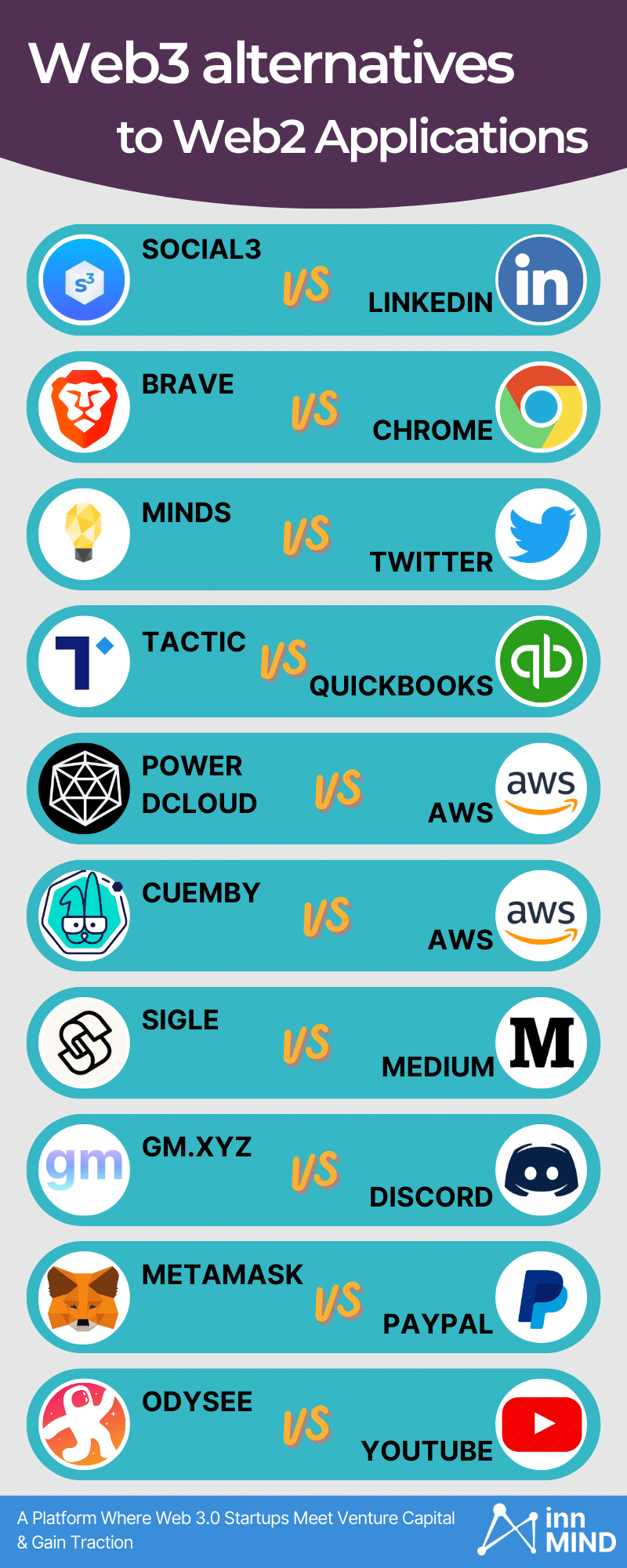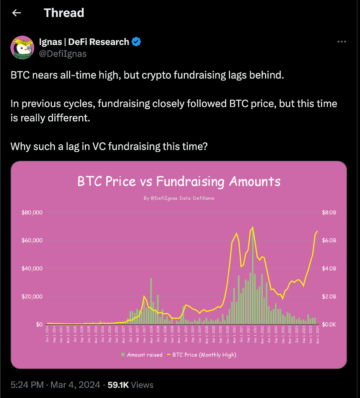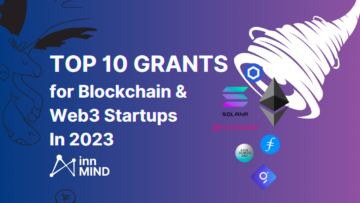The concept of the next Internet generation Web3 is still in its active development phase. However, many decentralized applications can already impress world wide web users with their alternatives to popular centralized tools and services.
Although the current version of the internet, or as we say nowadays “Web 2.0”, has given people incredible opportunities for creating content and generating profit, this potential still depends a lot on the participation of large tech giants such as Google, Facebook or Twitter.
Web3 aims to completely decentralize the web and eliminate the need for corporations as intermediaries.
Just as Bitcoin seeks to take complete control away from financial institutions and governments, Web3 wants to do the same for the Internet. And it must be said that startups associated with developing next-generation Internet projects are doing quite well: according to statistics by Metav.rs, 46% of financial applications are already taking advantage of Web3 technology and shifting towards a decentralized finance vertical.
Moving from a centralized infrastructure to a decentralized one is becoming a new path for many users. Increasingly, people are choosing Web3 alternatives over conventional applications. This is primarily because decentralized applications (DApps) built on blockchain technology are designed to provide a more secure and user-centric environment. In addition, these platforms address the privacy and control issues inherent in centralized services.
We can predict that in the near future, we will see even more growth in the development of decentralized tools and services that act as an alternative to Web2 solutions we’re used to, but with a blockchain backend. And in this article, you will learn about already existing popular Web3 apps, which can replace well-known Web2 players.
💡 But first, don’t forget to join our mailing list to get notified about the best content about web3 startups and VC deals 👇
Look at the infographics below, highlighting the best web3 alternatives to the popular web2 apps that you probably use every day 👇


Impressive, isn’t it? And it’s just a few out of many amazing web3 products and technologies that already exist and start gaining traction on the market, and potentially can substitute the widely-used apps controlled by web2 giants.
👉 Audius VS Spotify
Audius is a decentralized blockchain-based music streaming platform. It aims to give artists and creators more control over their music.
By uploading content to Audius, they can create and subsequently use immutable recordings, and a decentralized network of nodes will protect digital ownership. Audius gets rid of intermediaries in the traditional music industry by connecting artists directly to their fans.
👉 Presearch VS Google
Presearch is an open decentralized search engine that rewards users with PRE tokens for using, contributing and promoting the platform. The essence of this search engine is that your search query is not processed on a single server, but is distributed among many nodes working in the ERC-20 network. This should provide truly anonymous search queries without leaks of personal data.
Another advantage: this search engine is not guided by any company policy, that is, it gives out search queries as they are. This makes it possible to find those sites or information that Google or another search engine wants to hide from users for one reason or another.
👉 Lenster VS Twitter
Lenster is a decentralized social networking application based on the Lens Protocol software stack. Simply put, it is the new Web3 Twitter alternative.
The idea behind Lens Protocol is to create a decentralized platform that enables users to obtain digital ownership of their content and user accounts using a blockchain network.
Instead of traditional social media accounts that rely on email IDs and a unique username, Lens Protocol uses crypto addresses and NFTs for authentication and monetization purposes. This setup allows users, rather than a centralized company, to control the content and personal data associated with accounts.
👉 Filecoin VS Dropbox
Filecoin is a decentralized alternative to Dropbox. It is a blockchain platform focused on decentralized data storage with built-in economic incentives for users. It is one of the main infrastructure projects of the Web3 direction.
The Filecoin platform is a decentralized version of the popular cloud storage. It is based on the IPFS protocol, but supplements it with economic incentives. Anyone can become a Filecoin user by paying to store their files on the network, or, alternatively, add their own storage hardware to the network and be rewarded with native FIL cryptocurrency.
👉 IPFS VS GDrive
IPFS stands for InterPlanetary File System, an open source, peer-to-peer, distributed hypermedia protocol that is intended to function as a ubiquitous file system for all computing devices.
IPFS is essentially a blockchain network used to store all types of files in a decentralized, peer-to-peer (P2P) way without trust. The main purpose of IPFS is to link all individual nodes (nodes) that connect to the system and replace the Hypertext Transfer Protocol (HTTP) in a single cataloged space.
The protocol is already finding practical application. Sellers in e-commerce are using it to build digital storefronts, and medical institutions are using it to exchange data on diseases.
👉 Braintrust VS Upwork
Braintrust is a decentralized labor exchange that wants to connect big companies with freelancers. The project helps talented people without intermediaries to get in touch with famous companies, which are partners of Braintrust. That way, the person doesn’t have to share their income with anyone, and all transactions will be done with their token via a smart contract.
The platform itself is currently developing nicely and more than 1,200 job offers are already being added there every day.
👉 Ethereum Name Service VS Godaddy
Ethereum Name Service (ENS) is a distributed domain name system running on the Ethereum blockchain. The project was launched in 2017. ENS converts complex identifiers, such as cryptocurrency wallet addresses and long hex strings of numbers and hashes, into simplified and readable names. ENS makes it easy to exchange and remember Ethereum addresses.
👉 Indorse VS Linkedin
Indorse is a decentralized social network. The developers plan to grow their project into a decentralized alternative to LinkedIn, where users will share their professional skills in exchange for crypto points.
The new social network will be based on Ethereum blockchain platform.
Indorse users will receive bonuses — Indorse Rewards, as well as a rating — Indorse Score. The rating can be increased with the support of other users. The more often a person will use the site and make publications on it, the more points he will accumulate. All transactions with data and bonuses will be registered in a distributed Ethereum registry.
👉 DCloud and Cuemby VS AWS Cloud
There are a couple of strong and promising projects we want to feature here, that have potential to become fully decentralized alternatives to AWS Cloud solutions (both were featured in “Top 10 Web3 and Blockchain Infrastructure startups to observe in 2022“):
🔗 Power DCloud
Power DCloud is a fast and low-cost web3 infrastructure platform for full-stack, really decentralized applications. It was featured in the “Top Web3 & DeFi startups in 2022-2023 that can flourish“.
Unlike traditional cloud providers, Power DCloud is completely decentralized, providing developers with a secure and scalable platform to build decentralized applications with a decentralized backend and frontend.
In addition to its multichain network, and AppChains, Power DCloud also offers decentralized storage and the Power Hub decentralized appstore. This comprehensive set of tools makes it easy for developers to create and deploy decentralized applications without the need for a centralized service provider.
With its focus on Web3, Power DCloud quickly becomes the go-to choice for decentralized application development and is poised to disrupt the traditional infrastructure industry. Whether you’re a developer looking to build the next generation of decentralized applications, or a user looking for a more secure and transparent platform, Power DCloud has everything you need to get started.
🔗 Cuemby Cloud Platform (CCP)
Cuemby empowers teams to achieve faster time to market, with less effort and cost.
It provides a solution that enables teams to have faster time to market, with automation, performance, and security at the forefront. CCP is flexible and supports a wide range of products, from simple to complex. The result is less time spent on development and deployment, and more time spent on innovation.
Cuemby enables web3 apps to automate many of the development and deployment processes, letting the development team focus on product building. This can significantly reduce the time to market for new features or products for new decentralized startups. Using CCP, dApps can reduce the time to market from 24 months to 6 months. In addition, CCP helps developers to optimize infrastructure and cloud costs, and increase the runaway for web3 teams and projects.
👉 Arweave VS Amazon WS S3
Arweave is a new data storage protocol in a blockchain-like structure called Blockweave. It is built on a new consistent proof-of-access mechanism that, for the first time, makes truly low-cost data storage available.
Arweave has its own native AR token, which is distributed as a reward to miners. They, in turn, store the data and keep the system secure.
👉 Social3 VS Linkedin
Social3 is a Web3-based social recruiting platform that offers users a unique «recommend and earn» monetization model. Thanks to this platform talented specialists can easily find an employer. The developers are positioning their project as «a decentralized LinkedIn connecting web3 professionals».
👉 Brave VS Chrome Browser
Brave is a free, open-source browser with built-in privacy settings that hide ads on sites by default.
Brave has a unique ad model: users can opt to see ads in the Brave Ads network and earn rewards in the cryptocurrency Basic Attention Token (BAT).
Brave is similar in appearance and functionality to Google Chrome, the only difference being that it doesn’t show ads on websites and doesn’t collect personal information by default. Brave also blocks location tracking and malware, does not play videos by default, rejects third-party cookies, and does not create a digital fingerprint of the user.
👉 Torum VS Facebook
Torum is a SocialFi ecosystem that combines social networking, cryptocurrency and NFT capabilities. The platform is a special cryptospace uniting cryptocurrency users and cryptoproject authors. Torum includes both the social network itself for communication as well as the NFT marketplace, crop platform and Avatar NFT.
Within the ecosystem, you can communicate on any cryptocurrency-related topic, create your own community, exchange tokens, or sell them on the market.
👉 Minds VS Twitter
Minds is a decentralized, open-source social network where users earn crypto-tokens for their contributions to the network. The tokens can be exchanged for additional content views or sent to other channels as tips or paid subscriptions. Minds is based on the principles of privacy, transparency and freedom of expression.
👉 Tactic VS Quickbooks
Tactic offers cryptocurrency financial management software for entrepreneurs.
According to the developers, Tactic will solve the problem of keeping track of businesses’ crypto holdings and online activity by aggregating data from disparate sources to give businesses a «complete view of their balance sheet and activity». The project software helps companies automatically classify transactions and apply accounting logic, such as calculating profit/loss dollars and taxable events.
👉 Sigle VS Medium
Sigle is a Web3 app that allows writers and bloggers to publish their work and monetize it just by using Stacks blockchain. This decentralized platform offers readers to lock in a certain amount of their Stacks tokens (STX), supporting a particular author, while the author of the content receives a reward in Bitcoins, which were mined during the Stacks network’s coin stacking.
👉 GM.xyz VS Discord
GM.xyz is an alternative replacement for Discord application, where users can create Reddit-style chat rooms and forums to create a scalable community of crypto enthusiasts. The service also supports a user reputation system on blockchain and fundraising tools. The main goal of the project is to create a safe environment for people, where there is no spamming and intrusive advertising.
MetaMask is a non-custodial (OTC) crypto wallet that allows you to receive, store and send cryptocurrency assets. Metamask wallet exists as an extension for Google Chrome and other web browsers and a smartphone application.
The MetaMask app has a number of clear pluses: a reputable developer, a large number of cryptocurrencies from different blockchain networks, customer support, additional features, and a concise design. It is also integrated by a large number of dApps for the digital identification of users (options to log in / sign up with your Metamask wallet).
👉 Odysee VS Youtube
Odysee is a web3 app, that allows you to upload and share videos, allowing users to publish their work without having to pay for hosting. It is decentralized and censorship-resistant, which means there are no centralized servers to shut down or block.
In addition, on the Odysee platform, content creators can earn money from their videos, while users and viewers can reward creator for interesting content.
Ready to get noticed
by crypto VCs?
Make your first step towards growthing your idea – create a profile on InnMind!
If you want to get more interesting news and information about Web3, venture investments and startup opportunities, then subscribe to our Twitter, LinkedIn, Telegram, Youtube accounts or go to our website.
- SEO Powered Content & PR Distribution. Get Amplified Today.
- Platoblockchain. Web3 Metaverse Intelligence. Knowledge Amplified. Access Here.
- Source: https://blog.innmind.com/best-web3-alternatives-to-your-everyday-web2-apps-infographics/
- 1
- 10
- 2017
- 28
- a
- About
- Accounting
- Accounts
- Accumulate
- Achieve
- Act
- active
- activity
- Ad
- added
- addition
- Additional
- address
- addresses
- Ads
- ADvantage
- Advertising
- aims
- All
- All Transactions
- Allowing
- allows
- already
- alternative
- alternatives
- amazing
- Amazon
- among
- amount
- and
- Anonymous
- Another
- anyone
- app
- Application
- Application Development
- applications
- Applications (DApps)
- Apply
- apps
- AR
- article
- Artists
- arweave
- Assets
- associated
- attention
- AUDIUS
- Authentication
- author
- authors
- automate
- automatically
- Automation
- available
- avatar
- AWS
- Backend
- Balance
- Balance Sheet
- based
- basic
- Basic Attention Token
- Basic Attention Token (BAT)
- BAT
- because
- become
- becomes
- becoming
- behind
- being
- below
- BEST
- Big
- Bitcoin
- Bitcoins
- Block
- blockchain
- Blockchain networks
- blockchain platform
- blockchain technology
- blockchain-based
- Blocks
- bonuses
- brave
- browser
- browsers
- build
- Building
- built
- built-in
- businesses
- calculating
- called
- capabilities
- ccp
- censorship-resistant
- centralized
- certain
- channels
- chat rooms
- choice
- choosing
- Chrome
- Classify
- clear
- Cloud
- Cloud Platform
- cloud storage
- Coin
- collect
- COM
- combines
- communicate
- Communication
- community
- Companies
- company
- complete
- completely
- complex
- comprehensive
- computing
- concept
- Connect
- Connecting
- consistent
- content
- content creators
- contract
- contributing
- contributions
- control
- controlled
- conventional
- cookies
- Corporations
- Cost
- Costs
- Couple
- create
- Creating
- creator
- creators
- crop
- crypto
- Crypto wallet
- cryptocurrencies
- cryptocurrency
- Cryptocurrency Assets
- Cryptocurrency Wallet
- Cuemby
- Current
- Currently
- customer
- Customer Support
- DApps
- data
- data storage
- day
- Deals
- decentralize
- decentralized
- Decentralized Applications
- Decentralized Finance
- decentralized network
- decentralized platform
- Decentralized Social
- Default
- DeFi
- depends
- deploy
- deployment
- Design
- designed
- Developer
- developers
- developing
- Development
- Devices
- difference
- different
- digital
- digital ownership
- direction
- directly
- discord
- diseases
- disparate
- Disrupt
- distributed
- doing
- dollars
- domain
- Domain Name
- domains
- down
- Dropbox
- during
- e-commerce
- earn
- easily
- Economic
- ecosystem
- effort
- eliminate
- empowers
- enables
- Engine
- ENS
- enthusiasts
- entrepreneurs
- Environment
- ERC-20
- essence
- essentially
- Ether (ETH)
- ethereum
- Ethereum blockchain
- Ethereum Name Service
- Even
- events
- Every
- every day
- everyday
- everything
- exchange
- existing
- exists
- extension
- famous
- fans
- FAST
- faster
- Feature
- featured
- Features
- few
- File
- Filecoin
- Files
- finance
- financial
- Financial institutions
- financial management
- Find
- finding
- fingerprint
- First
- first time
- flexible
- Focus
- focused
- forefront
- forums
- Free
- Freedom
- from
- Frontend
- fully
- function
- functionality
- Fundraising
- future
- gaining
- generating
- generation
- get
- Give
- given
- gives
- GM
- Go
- goal
- Google Chrome
- Governments
- Grow
- Growth
- Hardware
- having
- helps
- here
- HEX
- Hide
- highlighting
- Holdings
- hosting
- However
- HTTPS
- Hub
- idea
- Identification
- immutable
- in
- Incentives
- includes
- Income
- Increase
- increased
- increasingly
- incredible
- individual
- industry
- information
- Infrastructure
- inherent
- Innovation
- institutions
- integrated
- interesting
- intermediaries
- Internet
- Interplanetary File System
- Investments
- IPFS
- issues
- IT
- itself
- Job
- join
- Keep
- keeping
- labor
- large
- launched
- Leaks
- LEARN
- Lens
- Lens Protocol
- letting
- LINK
- List
- location
- location tracking
- Long
- looking
- Lot
- Main
- make
- MAKES
- malware
- management
- many
- Market
- marketplace
- means
- mechanism
- Media
- medical
- MetaMask
- minds
- mined
- Miners
- model
- monetization
- monetize
- money
- months
- more
- multichain
- Music
- music industry
- music streaming
- name
- Name Service
- names
- native
- Near
- Need
- network
- networking
- networks
- New
- New Features
- news
- next
- next-generation
- NFT
- nft marketplace
- NFTs
- nodes
- non-custodial
- number
- numbers
- observe
- obtain
- Offers
- ONE
- online
- open
- open source
- opportunities
- Optimize
- Options
- OTC
- Other
- own
- ownership
- p2p
- paid
- part
- participation
- particular
- partners
- path
- Pay
- paying
- peer to peer
- Peer-to-Peer (P2P)
- People
- performance
- person
- personal
- personal data
- phase
- plan
- platform
- Platforms
- plato
- Plato Data Intelligence
- PlatoData
- Play
- players
- points
- policy
- Popular
- positioning
- possible
- potential
- potentially
- power
- Power DCloud
- Practical
- predict
- primarily
- principles
- privacy
- probably
- Problem
- processes
- Product
- Products
- professional
- Profile
- Profit
- project
- projects
- promising
- promoting
- protect
- protocol
- provide
- provider
- providers
- provides
- providing
- publications
- publish
- purpose
- purposes
- put
- quickly
- range
- rating
- RE
- readers
- reason
- receive
- receives
- recruiting
- reduce
- registered
- registry
- rely
- remember
- replace
- reputable
- reputation
- result
- Reward
- rewarded
- Rewards
- Rid
- Rooms
- running
- safe
- Said
- same
- scalable
- Search
- search engine
- secure
- security
- Seeks
- sell
- Sellers
- service
- Service Provider
- Services
- set
- settings
- setup
- Share
- SHIFTING
- should
- show
- Shut down
- sign
- significantly
- similar
- Simple
- simplified
- simply
- single
- site
- Sites
- skills
- smart
- smart contract
- smartphone
- Social
- social media
- social network
- Social networking
- Software
- solution
- Solutions
- SOLVE
- Source
- Sources
- Space
- special
- specialists
- spent
- stack
- stacking
- Stacks
- stands
- start
- started
- startup
- Startups
- Step
- Still
- storage
- store
- Store the data
- streaming
- strong
- structure
- STX
- subscribe
- subscriptions
- Subsequently
- such
- support
- Supporting
- Supports
- system
- Take
- taking
- talented
- team
- teams
- tech
- tech giants
- Technologies
- Technology
- The
- their
- third-party
- time
- tips
- to
- token
- Tokens
- tools
- topic
- touch
- towards
- track
- Tracking
- traction
- traditional
- Transactions
- transfer
- Transparency
- transparent
- Trust
- TURN
- types
- ubiquitous
- unique
- Uploading
- use
- User
- user-centric
- users
- VC
- VCs
- venture
- version
- via
- Videos
- View
- viewers
- views
- Wallet
- web
- Web browsers
- Web2
- Web3
- web3 technology
- websites
- well-known
- whether
- which
- while
- wide
- Wide range
- will
- without
- Work
- working
- world
- world wide web
- Your
- youtube
- zephyrnet










